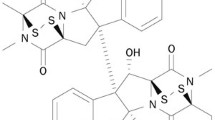Abstract
We studied the role of DNA topoisomerase II in the biological actions of a series of novel alkylaminoanthraquinones, including N-oxide derivatives designed as prodrugs liable to bioreductive activation in hypoxic tumour cells. Drug structures were based upon the DNA-binding anticancer topoisomerase II poison mitoxantrone with modifications to the alkylamino side chains. The agents included AQ4, 1,4-bis{[2-(dimethylamino)ethyl]amino}5,8-dihydroxy-anthracene-9,10-dione, and AQ6, 1{[2-dimethylamino)-ethyl]amino}4-{[2[(hydroxyethyl)amino]ethyl]-amino}5,8-dihydroxy-anthracene-9,10-dione, together with the corresponding mono-N-oxide (AQ6NO) and di-N-oxide (AQ4NO). The R3N+-O- modification renders the terminal nitrogen group electrically neutral and was found to reduce AQ6NO or effectively abolish AQ4NO-DNA binding. Comparative studies were carried out using two SV40-transformed fibroblast cell lines, MRC5-V1 and AT5BIVA, the latter being a relative overproducer of DNA topoisomerase IIα. The inhibition of DNA topoisomerase II decatenation activity ranked according to DNA-binding capacity. A similar ranking was found for drug-induced DNA-protein cross-linking in intact cells, depending upon topoisomerase II availability. Inhibition of DNA synthesis in S-phase synchronized cultures ranked in the order of AQ6>mitoxantrone≫AQ6NO and was independent of topoisomerase II availability. Cytotoxicity of acute 1-h exposures for all agents except the inactive AQ4NO was enhanced in the topoisomerase II-overproducing cell line. The results indicate an important role for enzyme targeting in anthraquinone action. However, DNA synthesis inhibition and cytotoxicity were greater than expected for AQ6, given its topoisomerase- and DNA-interaction properties, and parallel studies have provided evidence of an additional role for enhanced subcellular accumulation and nuclear targeting. The inactivity of AQ4NO and the retention of only partial activity of AQ6NO, allied with the effective topoisomerase II-targeting and high cytotoxic potential of their presumed metabolites, favour their use as prodrugs in tumour cells with enhanced bioreductive potential.
Similar content being viewed by others
Author information
Authors and Affiliations
Additional information
Received: 12 August 1995/Accepted: 14 August 1996
Rights and permissions
About this article
Cite this article
Smith, P., Blunt, N., Desnoyers, R. et al. DNA topoisomerase II-dependent cytotoxicity of alkylaminoanthraquinones and their N-oxides. Cancer Chemother Pharmacol 39, 455–461 (1997). https://doi.org/10.1007/s002800050598
Issue Date:
DOI: https://doi.org/10.1007/s002800050598




